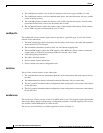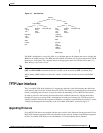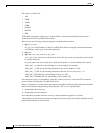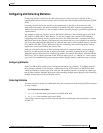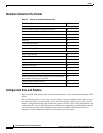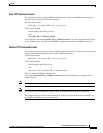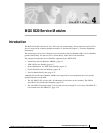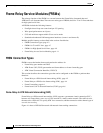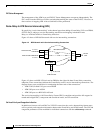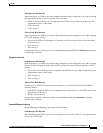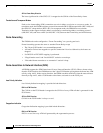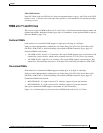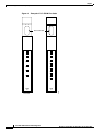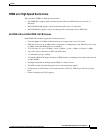
4-2
Cisco MGX 8220 Installation and Configuration
Release 5.0, Part Number 78-6430-03 Rev. D0, November 2003
Chapter
Frame Relay Service Modules (FRSMs)
Frame Relay Service Modules (FRSMs)
The primary function of the FRSM is to convert between the Frame Relay formatted data and
ATM/AAL5 cell-formatted data. There are two main types of FRSMs, those for T1 or E1 lines and those
for high speed serial lines.
All FRSMs include the following features:
• ForeSight closed-loop rate control and per-VC queuing
• Wire-speed performance on all ports
• SVC and multicast support within Cisco service nodes
• Standard and enhanced LMI management interfaces (Annex A and Annex D)
Module-specific features are described in the sections listed below.
• FRSM Connection Types, page 4-2
• FRSMs for T1 and E1 lines, page 4-7
• FRSMs for High Speed Serial Lines, page 4-9
• Frame Relay Access Service Module, page 4-11
FRSM Connection Types
FRSMs convert the header format and translate the address for
• Frame Relay port number and DLCI
• ATM-Frame UNI (FUNI) port number and frame address or frame forwarding port
• ATM Virtual Connection Identifier (VPI/VCI)
This section describes the connection types that can be configured on the FRSM to perform these
functions.
• Frame-Relay-to ATM Network Interworking (NIW), page 4-2
• Frame-Relay-to ATM Service Interworking (SIW), page 4-4
• Frame Forwarding, page 4-6
• Frame-based User-to-Network Interface (FUNI), page 4-6
Frame-Relay-to ATM Network Interworking (NIW)
Frame Relay-to-ATM network interworking (NIW) supports a permanent virtual connection (PVC)
between two Frame Relay users over a Cisco network or a multi-vendor network. The traffic crosses
the network as ATM cells. To specify NIW for a connection, add the connection with a channel type of
network interworking.
Figure 4-1 shows a BPX 8620 network with network interworking connections.



